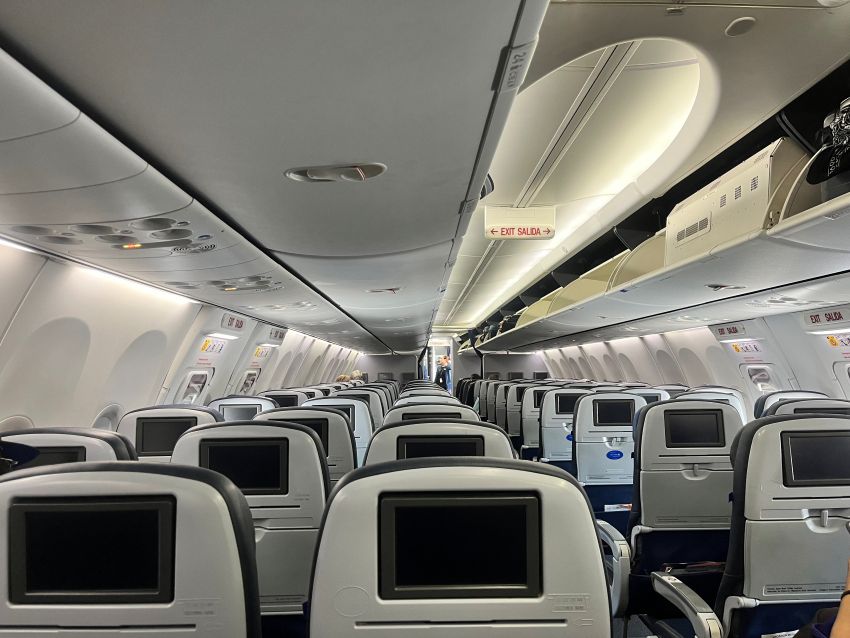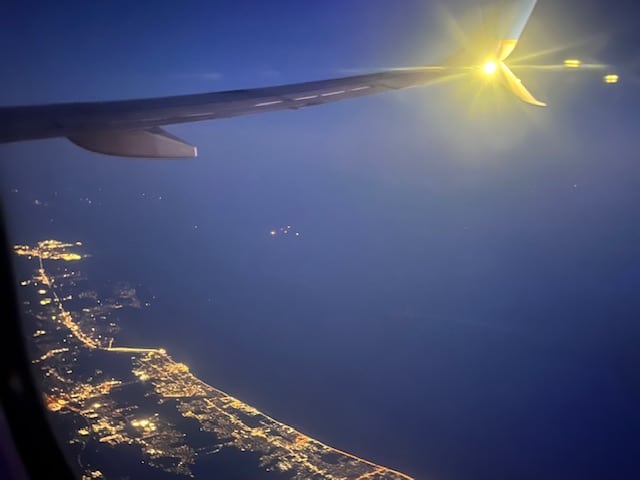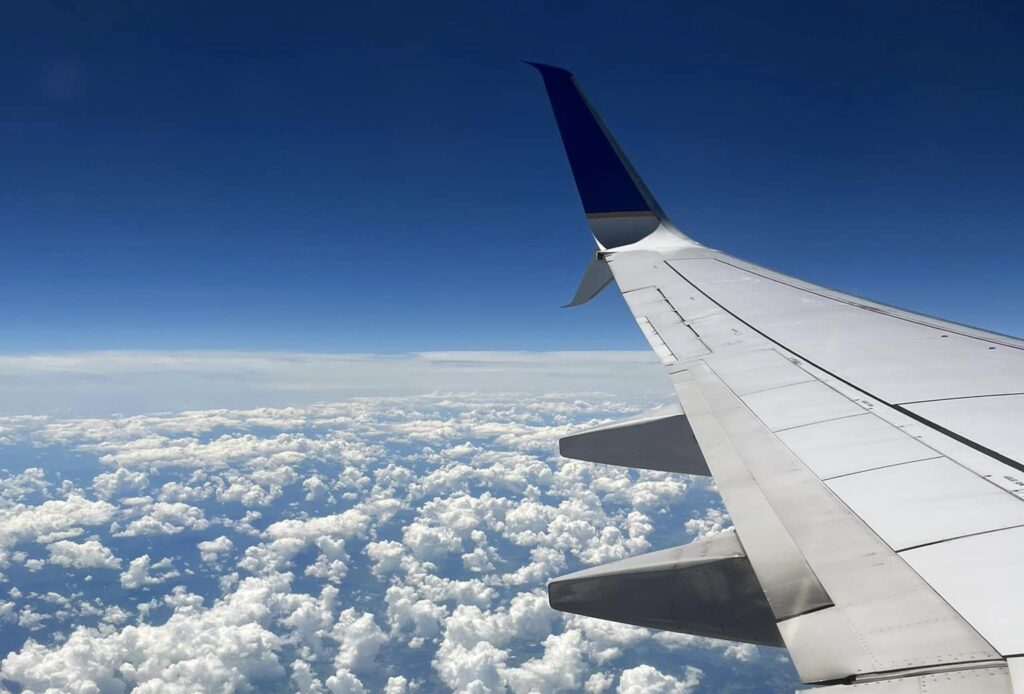This post contains affiliate links. If you make a purchase through these links, I can earn a commission at no extra cost to you. Thank you!
Tips to avoid jet lag so you can actually enjoy your first day.
If you’ve got your first long-haul or international flight coming up, let me just say, GET EXCITED! But also…brace yourself. Jet lag is real, and it can hit hard.
If it’s also your first time traveling solo, this post has some great tips to help you feel ready and confident.
That groggy, “what day is it?” feeling can totally throw off your first few days. The good news? There are ways to deal with it so you can actually enjoy where you’ve landed.
After a bunch of long travel days (some pushing 30 hours, yes, really), I’ve figured out a few things that help me hit the ground running instead of face-planting into the hotel bed at 10 a.m.

10 Tips to Avoid Jet Lag That I Swear By
1. Drink ALL the Water
Okay, not literally all the water. But seriously, hydration is your best friend on a long flight. Between the salty airplane food and dry cabin air, it’s way too easy to get dehydrated. And when you’re dehydrated, jet lag feels ten times worse.
I try to drink about 8 ounces of water for every hour I’m flying. That means water before takeoff, sipping throughout the flight, a full glass with each meal, and another big glass after I land. It sounds like a lot, but it really makes a difference.
2. Sleep If You Can
If you’re flying to Europe overnight (which most flights are), try your best to sleep on the plane. I know, it’s easier said than done. Between the food service, announcements, your seatmate’s elbows, and the general noise of the plane, it’s tough.
But there’s usually a good window of time to sleep after dinner service when they dim the lights and before breakfast starts. Even a few solid hours will help.
I can always tell when I didn’t sleep enough on the plane because it takes way longer to adjust once I land.
3. Travel Comfort = Sleep Success
For the longest time, I thought eye masks and neck pillows were kind of silly. Then I tried them. Game. Changer.
The eye mask blocks out all the cabin lights and tricks your brain into thinking it’s nighttime. And a good neck pillow means I’m not waking up with a crick in my neck.
I swear by the Trtl neck pillow. It looks weird, but it works. I usually get five or six decent hours of sleep with it.
I don’t personally use headphones, but if you’re sensitive to noise, noise-canceling ones are totally worth packing.

4. Easy on the Caffeine and Alcohol
I get it. A little wine with dinner feels like part of the travel experience, and coffee is tempting when you’re tired. But too much of either will mess with your sleep and leave you more dehydrated.
I usually allow myself one small glass of wine with dinner (especially if it’s free!), but that’s it. More than that, and I know I’ll wake up with a headache thanks to the dry cabin air.
When you’re traveling alone, keeping a clear head is just one part of staying safe. Check out my solo travel safety tips for more things to keep in mind.
BONUS TIP: Does a glass of warm milk help you fall asleep? Ask for milk at dinner service. It will be warm when you’re ready to settle down for the night.
5. A Little Help from Melatonin
Sometimes, I take a melatonin gummy when I know I need to sleep on the plane, especially if I’m flying to Asia. Taking it right after dinner service helps me relax just enough to doze off without making me feel groggy.
If you’ve never tried it before, definitely test it at home first to see how your body reacts.
6. Get Up and Move to Avoid Jet Lag
Long flights mean long hours in the same cramped seat, and it can leave you feeling sluggish.
I try to get up and walk a lap up one aisle and down the other every few hours, especially on those big international planes with two aisles.
Even just stretching or rolling your ankles helps keep your circulation going and your body feeling a little more human.
7. Let the Sun Help You Adjust
As soon as you arrive, spend some time outside even if you’re tired. Natural light helps reset your internal clock faster than anything else. Your body might think it’s still nighttime, but the sun says otherwise. Trust the sun.
8. Don’t Over Plan Your First Day
This is not the time to schedule an all-day tour or climb a mountain. My first day is usually reserved for wandering, checking out the area around my hotel, grabbing a bite to eat, and just adjusting to all that is new and different.
You’re easing into a new time zone so be kind to your body.
9. Eat Like It’s Local Time
This one’s easy and super effective. If you land in Europe at 9 a.m., but your body thinks it’s 3 a.m., follow the 9 a.m. time and eat breakfast. Even if you’re not hungry.
Same goes for lunch and dinner. Following the local meal time helps trick your body into adjusting faster.
10. Stay Awake Until Bedtime (Even If It’s Hard)
If you land in the morning, try your best to stay awake until at least 8 p.m. I know it’s tempting to crash for a nap, but powering through your first day really helps reset your internal clock.
Take it slow, stay active but not overly busy, and keep the stress low. And if you must nap, keep it short. Like, 20 or 30 minutes max.

What are Long Haul Flights?
A long haul flight is typically one that lasts six or more hours.
If you’ve not taken a long haul flight before, you may be wondering what to expect on the plane. Here’s a quick breakdown from my own experience:
Flying from the U.S. to Europe
- Evening departure (most flights): Try to sleep as soon as the dinner service is over.
- Dinner service: Usually within the first 1 to 2 hours of takeoff. (Yes, even on flights that depart late at night.)
- Lights dimmed: That’s your cue to get comfy and try to rest.
- Mid-flight quiet: Not silent but calm enough to sleep.
- Breakfast: Served 1 to 2 hours before landing.
Flying from the U.S. to Asia
- Time difference: Major. You’re jumping ahead 12-16 hours.
- Longer flights: My longest flight was Singapore to San Francisco at 15 hours. Yes, I survived. In economy.
- Multiple legs and layovers: Unless you’re flying out of a major hub, expect 2 or 3 flights to get you there.
- Meal services: Dinner, a snack in the middle, and breakfast before landing.
- Lights dimmed: Just like Europe flights, but they may be dimmed at odd times because the time difference is so extreme. The timing is to help you adjust to the new time zone.
Final Thoughts on Avoiding Jet Lag
Jet lag is just part of long-distance travel, but it doesn’t have to ruin your trip. With a little planning and a lot of water (seriously, drink the water), you’ll bounce back faster than you think.
I hope these tips to avoid jet lag have helped you feel a little more confident to book that flight.
You’ve got this!
Resources to Book Your Trip
Flights
I like using Skyscanner to find flight deals. It searches hundreds of airlines and booking sites so you can compare prices, dates, and even airports in one place.
Accommodations
Booking.com is my go-to for hotels, guesthouses, and apartments. I like that you can filter for free cancellation and check reviews before you book.
Activities
For tours and experiences, I recommend GetYourGuide and Viator. Both have everything from walking tours to day trips, plus instant booking and mobile tickets.
eSIM
I’ve used Airalo and Saily for internet access when I travel. You can install the eSIM on your phone before you even leave home and there’s no need to swap physical SIM cards.
Airport Pickups
If you want a stress-free ride from the airport, check out Welcome Pickups. Your driver will meet you inside the terminal, help with your bags, and take you straight to your hotel.
Car Rental
Discover Cars makes it easy to compare rental companies so you get the best rate. You can see all the options and book in advance for peace of mind.
